6 Stowell Avenue
Stowell, located at the end of Stowell Avenue, is one of the earliest homes in Battery Point. It was built by John Montagu in 1831 on land granted to him by his uncle, Lieutenant Governor Arthur. Montagu enjoyed the benefits of Arthur’s patronage including an appointment as Colonial Secretary, but he was seen by many as a greedy, selfish man who was interested primarily in self-promotion.
Montagu left for England in 1839. Stowell was sold and underwent significant changes, including the Italianate alterations still partly visible today. It remained as a private residence until 1917, when it was sold and fitted out as a private hospital boasting the latest appliances including electric lights, bells, telephones, radiators and reading lamps. An extensive vegetable garden on the property supplied fresh food. One of three Hobart-registered nurse training schools, Stowell operated as a hospital until 1945, when financial difficulties forced it to close its doors following an increase in nurses’ wages and government demands for expensive improvements to meet modern medical standards.
The Commonwealth Government purchased the property in 1945 for CSIRO offices and laboratories. In 1957, a food-processing annex was constructed. Once a major source of employment for the unskilled labour force in Battery Point, food-processing enterprises were beginning to rely instead on the professional scientific input of the Battery Point laboratories.
The CSIRO presence was also an indicator of major social change that was on the way, resulting in the eventual ‘gentrification’ of Battery Point. When the new CSIRO headquarters was built on the waterfront, Stowell was sold again in the 1990s and revamped as private apartments.
Money is his idol and wherever that was to be procured, he has always shown unmeritorious zeal to put it in his pocket.
Listen
John Montagu was an unpopular man.
Money is his idol and wherever that was to be procured, he has always shown unmeritorious zeal to put it in his pocket. He is cunning and selfish, a shallow blundering politician, neither capable of conceiving nor executing enlarged and liberal objects and has contributed perhaps in no small degree to render Colonel Arthur’s administration unpopular. … We may conclude his character by saying if in that capacity he has done little good, he is not profound enough to do extensive mischief.
– Diary of Auditor GTW Boyes 1835
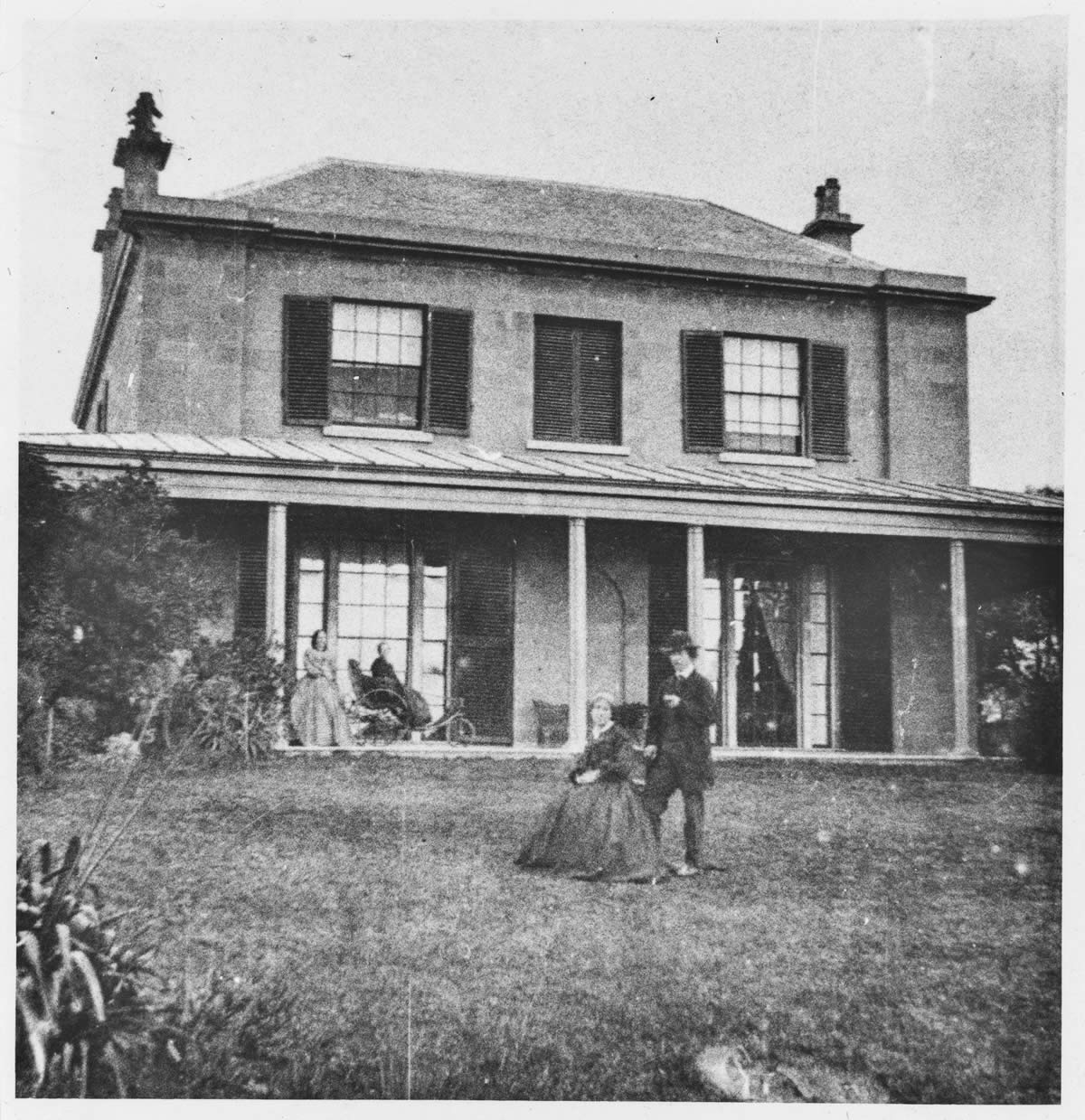
Early photo of Stowell
Montagu’s home, this was one of the earliest homes in Battery Point. It was built in 1831 on a land grant from his uncle Lieutenant Governor George Arthur.
Source
Tasmanian Archive and Heritage Office PH 30 1 346B

Stowell Gardens 2015
Stowell was sold in the 1990s and is now private apartments.
Photo
Private collection

Stowell, home of John Montagu Esq 1834
This sketch shows Stowell (upper left) dominating the landscape.
Source
Hobart Town Magazine January 1834, Tasmanian Archive and Heritage office PH 30 1 4733
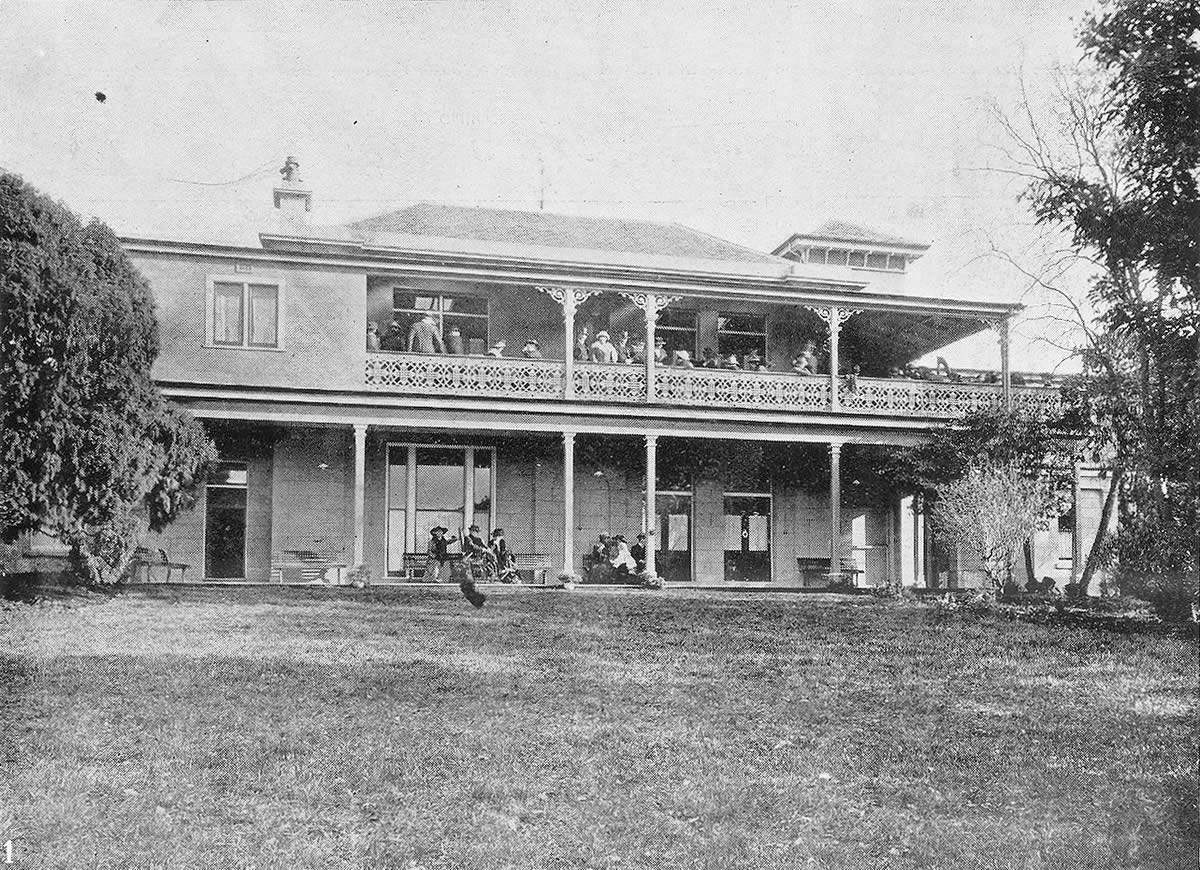
Stowell Hospital from the lawn 1918
The hospital was opened with great fanfare. Visitors were served afternoon tea while a string band played on the balcony.
Source
Weekly Courier, 5 September 1918 p.23

On the verandah at Stowell Hospital 1918
Source
Weekly Courier, 5 September 1918 p.23
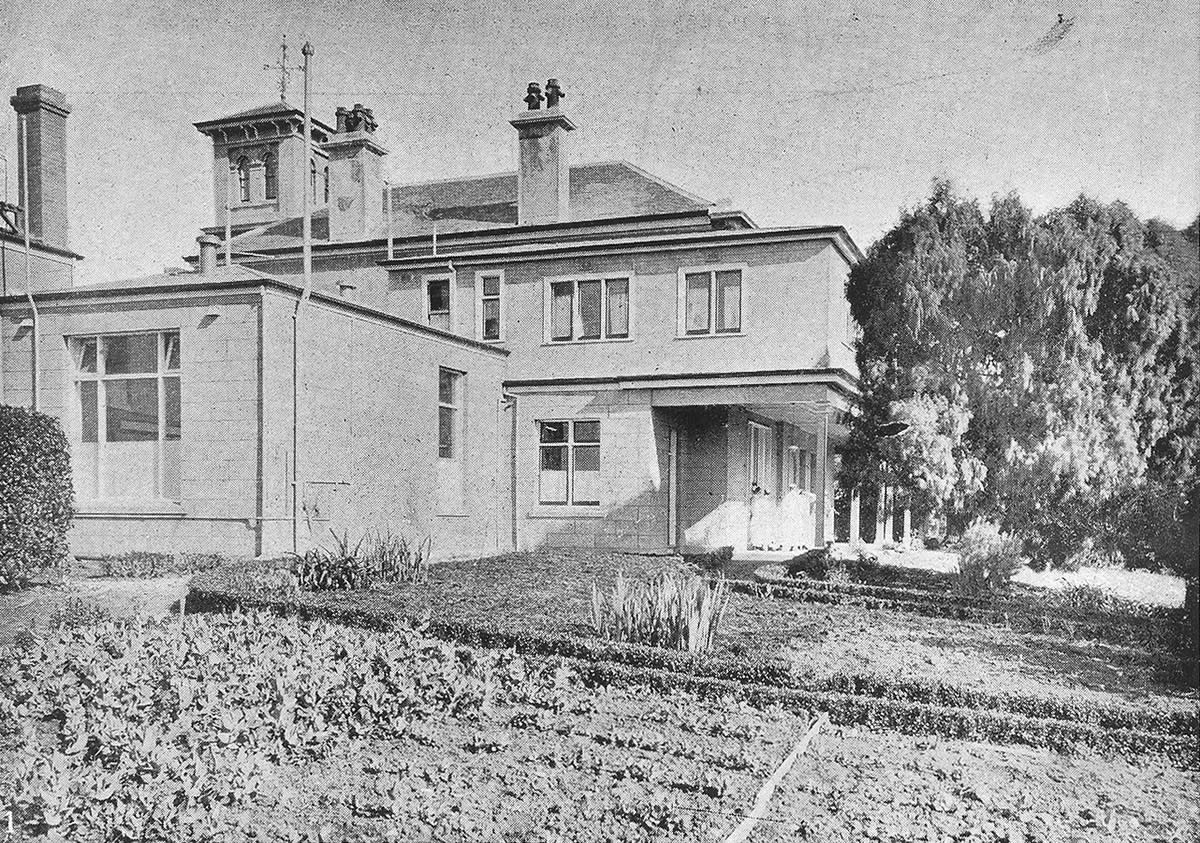
Stowell Hospital at the time it was opened in 1918
Note the vegetable garden providing fresh produce for the patients.
Source
Weekly Courier, 12 September 1918 p.21
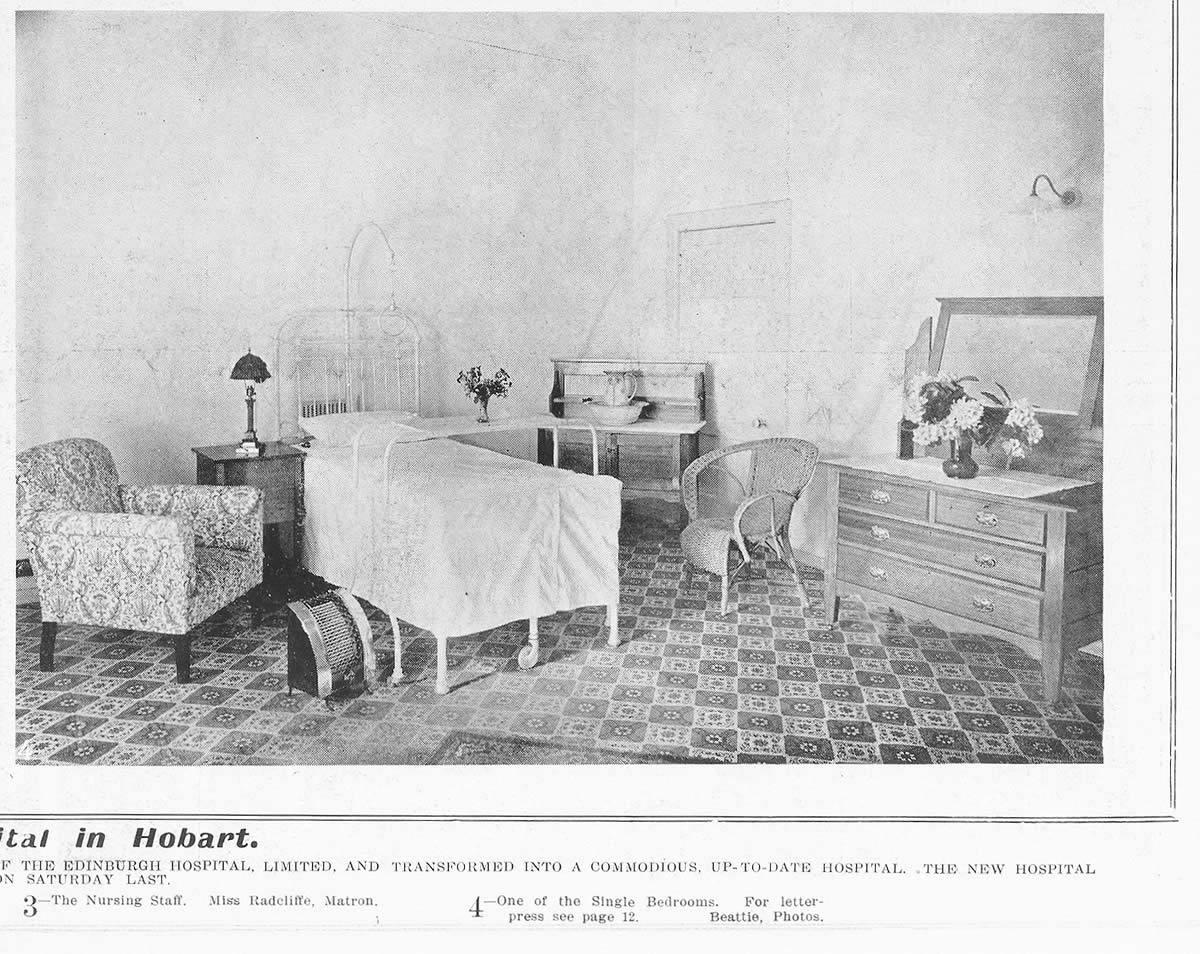
A ward at the new Stowell Hospital 1918
When it opened, the newspapers commented on the modern conveniences including electric bedside lights and radiators.
Source
Weekly Courier, 5 September 1918 p.23
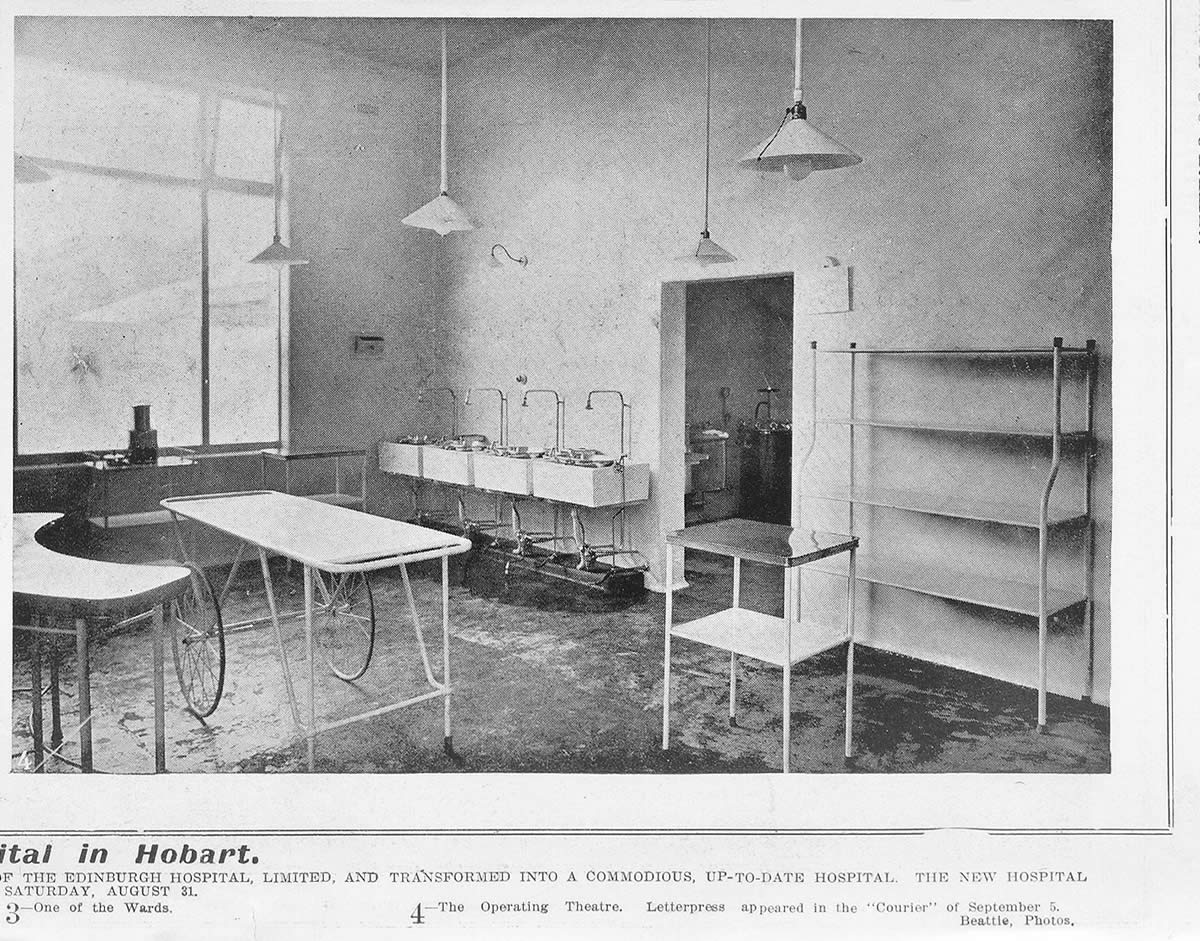
The operating theatre at Stowell Hospital 1918
A modern outfit at the time, but how sterile would it have been?
Source
Weekly Courier, 12 September 1918 p.21
